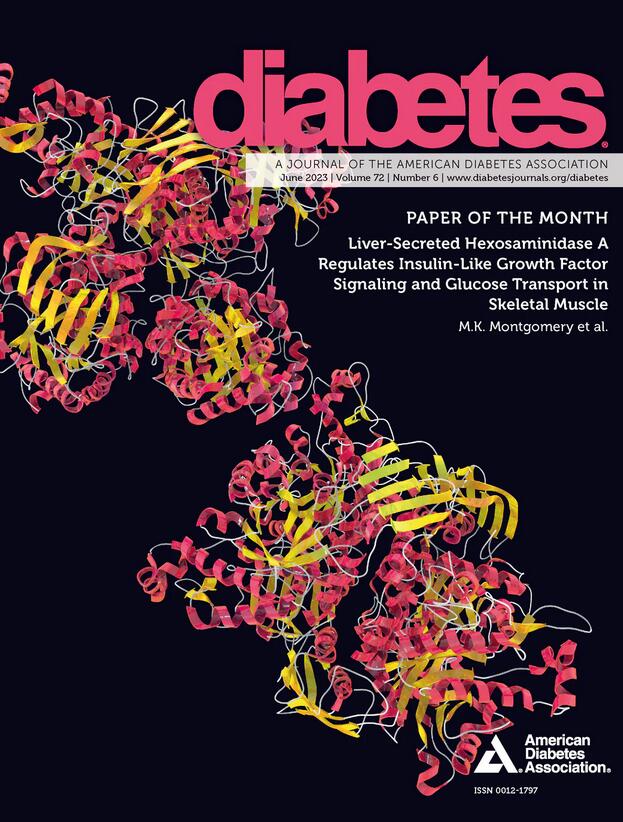SARS-CoV-2 Spike S1 subunit triggers pericyte and microvascular dysfunction in human pancreatic islets
IF 6.2
1区 医学
Q1 ENDOCRINOLOGY & METABOLISM
引用次数: 0
Abstract
The COVID-19 pandemic has profoundly affected human health, yet the mechanisms underlying its impact on metabolic and vascular systems remain incompletely understood. Clinical evidence suggests that SARS-CoV-2 directly disrupts vascular homeostasis, with perfusion abnormalities observed in various tissues. The pancreatic islet, a key endocrine mini-organ reliant on its microvasculature for optimal function, may be particularly vulnerable. Studies have proposed a link between SARS-CoV-2 infection and islet dysfunction, but the mechanisms remain unclear. Here, we investigated how SARS-CoV-2 spike S1 protein affects human islet microvascular function. Using confocal microscopy and living pancreas slices from non-diabetic organ donors, we show that a SARS-CoV-2 spike S1 recombinant protein activates pericytes — key regulators of islet capillary diameter and beta cell function—and induces capillary constriction. These effects are driven by a loss of angiotensin converting enzyme 2 (ACE2) from pericytes’ plasma membrane, impairing ACE2 activity and increasing local angiotensin II levels. Our findings highlight islet pericyte dysfunction as a potential contributor to the diabetogenic effects of SARS-CoV-2 and offer new insights into the mechanisms linking COVID-19, vascular dysfunction and diabetes.SARS-CoV-2刺突S1亚基触发人胰岛周细胞和微血管功能障碍
COVID-19大流行深刻影响了人类健康,但其对代谢和血管系统影响的潜在机制仍不完全清楚。临床证据表明,SARS-CoV-2直接破坏血管稳态,在各种组织中观察到灌注异常。胰岛是一个关键的内分泌小器官,其最佳功能依赖于微血管系统,可能特别脆弱。研究提出了SARS-CoV-2感染与胰岛功能障碍之间的联系,但其机制尚不清楚。在这里,我们研究了SARS-CoV-2刺突S1蛋白如何影响人胰岛微血管功能。利用共聚焦显微镜和来自非糖尿病器官供体的活体胰腺切片,我们发现SARS-CoV-2刺突S1重组蛋白激活周细胞-胰岛毛细血管直径和β细胞功能的关键调节因子-并诱导毛细血管收缩。这些影响是由周细胞质膜上血管紧张素转换酶2 (ACE2)的丧失所驱动的,ACE2活性受损,局部血管紧张素II水平升高。我们的研究结果突出了胰岛周细胞功能障碍是SARS-CoV-2致糖尿病效应的潜在因素,并为COVID-19、血管功能障碍和糖尿病之间的联系机制提供了新的见解。
本文章由计算机程序翻译,如有差异,请以英文原文为准。
求助全文
约1分钟内获得全文
求助全文
来源期刊

Diabetes
医学-内分泌学与代谢
CiteScore
12.50
自引率
2.60%
发文量
1968
审稿时长
1 months
期刊介绍:
Diabetes is a scientific journal that publishes original research exploring the physiological and pathophysiological aspects of diabetes mellitus. We encourage submissions of manuscripts pertaining to laboratory, animal, or human research, covering a wide range of topics. Our primary focus is on investigative reports investigating various aspects such as the development and progression of diabetes, along with its associated complications. We also welcome studies delving into normal and pathological pancreatic islet function and intermediary metabolism, as well as exploring the mechanisms of drug and hormone action from a pharmacological perspective. Additionally, we encourage submissions that delve into the biochemical and molecular aspects of both normal and abnormal biological processes.
However, it is important to note that we do not publish studies relating to diabetes education or the application of accepted therapeutic and diagnostic approaches to patients with diabetes mellitus. Our aim is to provide a platform for research that contributes to advancing our understanding of the underlying mechanisms and processes of diabetes.
 求助内容:
求助内容: 应助结果提醒方式:
应助结果提醒方式:


